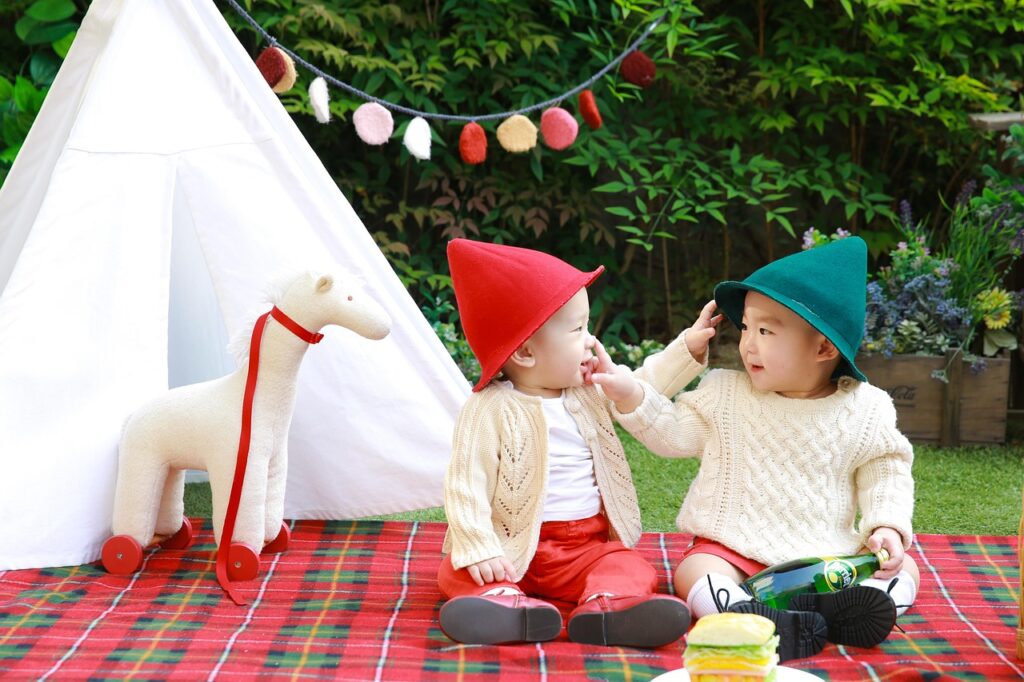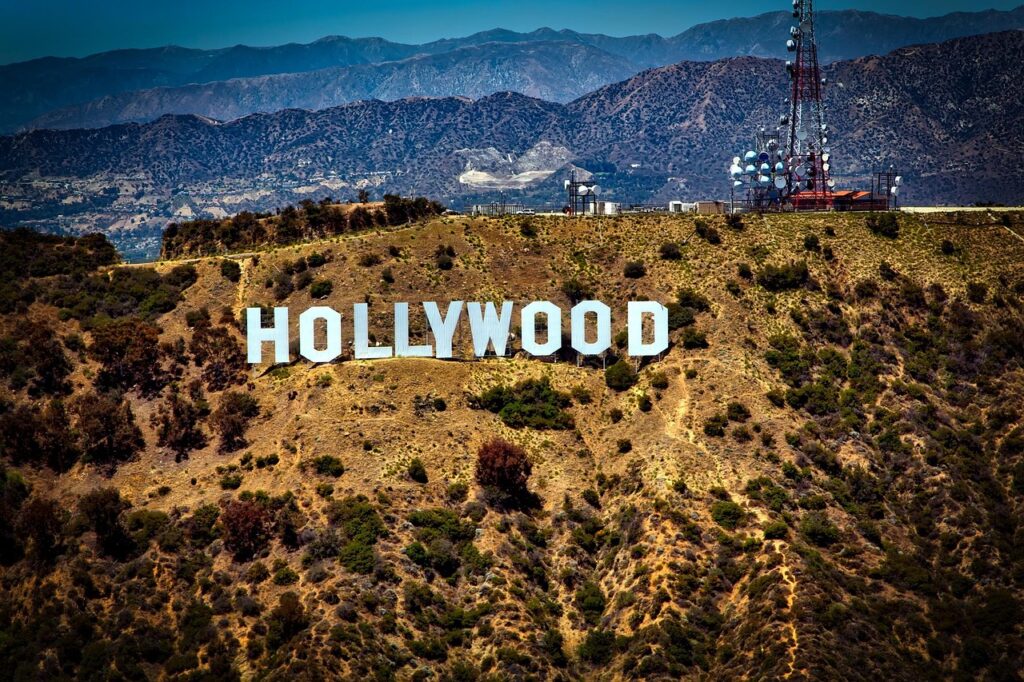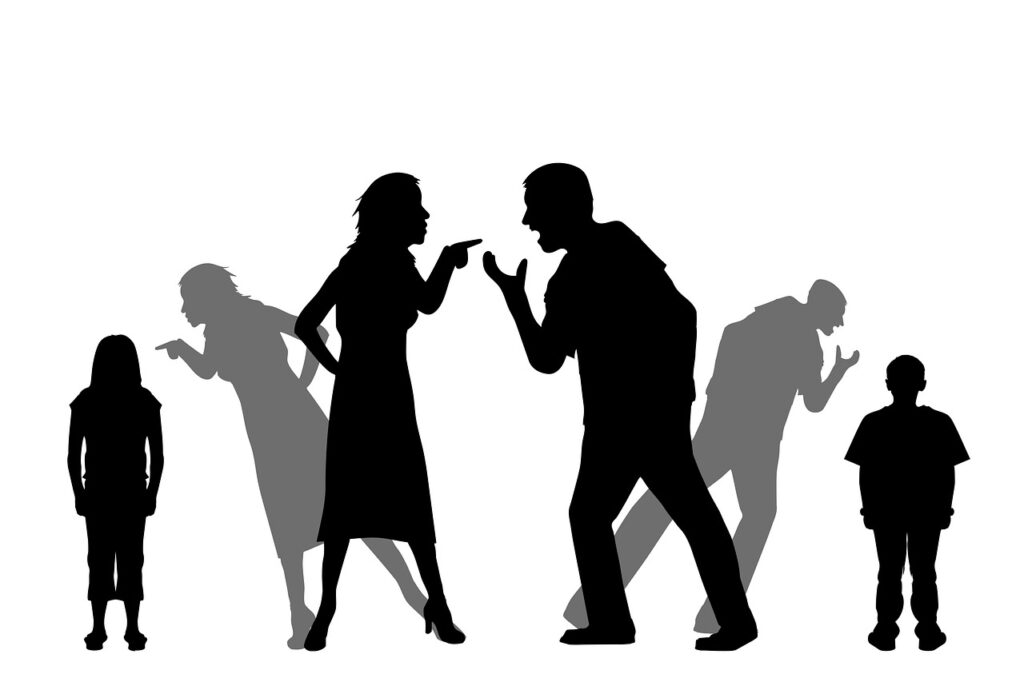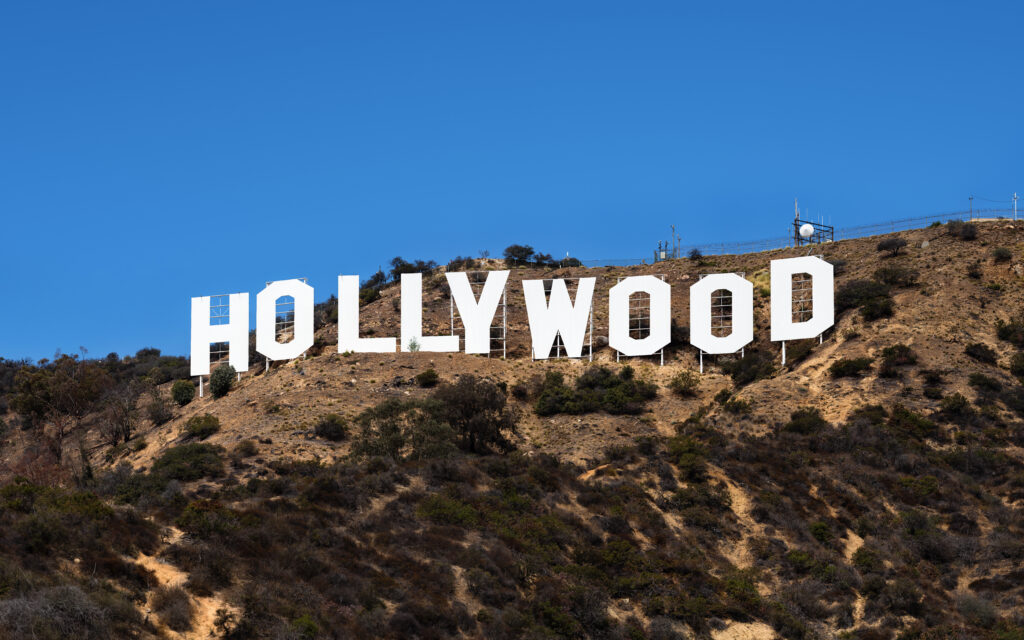
Olivia de Havilland, whose radiant presence illuminated the silver screen for decades, departed this world on July 26, 2020, at the astonishing age of 104. Her passing marked not merely the end of a life, but, as many noted, the closing chapter of Hollywood’s Golden Age itself. De Havilland embodied the quintessential movie star: elegant, talented, and undeniably captivating. Yet, beneath the veneer of glamour and iconic roles, her existence was a tapestry woven with struggles, defiance, and profoundly human complexities that often overshadowed the very dramas she brought to life on film.
Her story is far richer and more intricate than the sum of her celebrated performances. De Havilland navigated a landscape of personal betrayals, cutthroat industry politics, and the enduring shadow of a familial rivalry that captivated the public for generations. From a childhood scarred by abandonment and strictures to a career defined by battles for artistic integrity and tumultuous romantic entanglements, Olivia de Havilland was a woman who dared to forge her own path in an era where women, especially actresses, were expected to conform. This exploration delves into the poignant and often arduous realities that shaped her into the formidable icon she became, revealing a resilience and spirit that truly set her apart as the “last true movie star.”
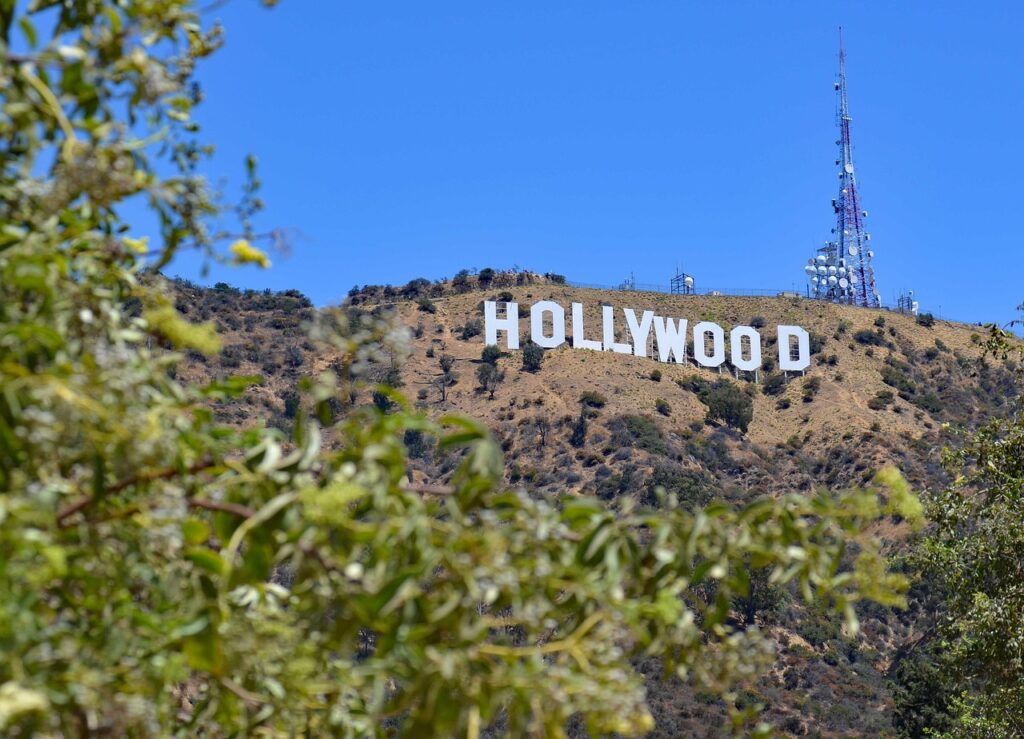
1. **Her Challenging Formative Years**Olivia de Havilland’s ascent to Hollywood royalty often obscured the profoundly difficult origins of her life, a period marked by abandonment and a suffocating domestic environment. Born on July 1, 1916, her early years were immediately tinged with heartbreak when her father deserted the family for his housekeeper while Olivia was still a young girl. This foundational experience of loss, a “taste of heartbreak from a young age,” would, in many ways, set a precedent for a life that demanded a steely resolve.
The emotional instability of her early home life was compounded by the strictures imposed by her mother, Lilian, who exerted an almost oppressive control over both Olivia and her sister, Joan. Lilian mandated that the girls seek permission even to leave the house, and meticulously vetted any potential suitors, creating an environment that was “not exactly a stable environment.” This cultivated a longing for self-determination that would define de Havilland’s character and later fuel her acts of rebellion.
Her path to stardom demanded an extraordinary act of defiance. Olivia’s stepfather, deeming acting “disgraceful,” issued an ultimatum when she secured a lead role in a school production: accept the part, and be kicked out of the house. At the tender age of 17, with an unwavering determination, de Havilland chose her destiny over domestic comfort, leaving home to pursue her dreams—an early indication of the fierce independence that would characterize her legendary career and “wouldn’t be her last act of defiance.”
Read more about: Understanding Barry White’s Final Years: A Comprehensive Look at His Life, Music, and Health Challenges

2. **The Tormented Love Affair with Errol Flynn**One of Olivia de Havilland’s earliest and most enduring on-screen pairings was with the dashing Errol Flynn, a collaboration that ignited not just cinematic magic, but also a deeply complex and heartbreaking romance off-screen. Their first major film together, the 1935 swashbuckling adventure *Captain Blood*, saw de Havilland play the “feisty Arabella” to Flynn’s magnetic leading man, foreshadowing a relationship that would be anything but straightforward. While many in Hollywood insisted their bond was “strictly professional,” the truth was far more intense and, for Olivia, utterly consuming.
Flynn, notorious as “one of the original bad boys of Hollywood,” captivated the still-teenaged Olivia, and she fell profoundly in love. This was a love, however, that was doomed from the outset. De Havilland harbored a deep-seated hatred for her feelings, primarily because Flynn was not only a self-professed “Hollywood degenerate” but also a married man. Stubborn and cool-headed, she kept her affections a closely guarded secret from everyone, including Flynn himself. Yet, “little did she know, Flynn was falling in love with her the entire time they were making films together.”
The emotional climax arrived on March 12, 1937, at a coronation ball in Los Angeles. As they shared a slow dance, Flynn finally confessed his long-held feelings to a “stricken de Havilland.” Her response, however, was an “excruciating choice”: she acknowledged being “deeply affected” by him, but issued a painful ultimatum—Flynn had to officially divorce his estranged wife, Lili Damita, for their relationship to progress. Her “desperate hope” was tragically unfulfilled. Later that year, Flynn delivered the “ultimate betrayal,” reconciling with Damita instead of breaking things off. This devastating decision left de Havilland heartbroken, yet it also paradoxically paved the way for the greatest role of her life.

3. **Defiance and Triumph in ‘Gone With the Wind’**In 1938, David O. Selznick’s colossal epic *Gone With the Wind* began casting, and for the pivotal role of Melanie Hamilton, Selznick desired no one but Olivia de Havilland. De Havilland instinctively understood that Melanie was her destiny, but her ambition immediately clashed with the rigid control of the studio system. Her contract with Warner Bros. was “a shackle around her neck,” and studio head Jack Warner, known for his contentious relationship with de Havilland, vehemently refused to lend her out for Selznick’s project, regardless of the financial incentive.
Undeterred by Warner’s vindictiveness, de Havilland displayed a cunning intellect. Instead of confronting Warner directly, she strategically “befriended Warner’s wife Anne and got her to convince Jack.” Warner himself later admitted, “Olivia, who had a brain like a computer concealed behind those fawn-like eyes, simply went to my wife and they joined forces to change my mind.” This ingenious manipulation secured the role, but the journey to cinematic immortality on the *Gone With the Wind* set was far from glamorous. The production was “legendarily gruelling,” with cast and crew enduring “16-hour days,” and the pressure led to even Vivien Leigh needing sleeping pills.
The production was notoriously chaotic, tearing through “an incredible three directors” before completion. De Havilland and Leigh, deeply upset by the initial director George Cukor’s “sudden and unceremonious” sacking, boldly approached Selznick to plead his reconsideration—a plea he refused. This rejection fueled their defiance; “unbeknownst to Selznick,” both actresses “continued to meet with Cukor on their weekends off so he could coach them through some of the hardest scenes.” Her commitment to her art was profound; for her childbirth scene, she visited a maternity ward and interviewed new mothers, even having her director “pinch her toes” to evoke genuine pain. Her hard work resonated powerfully, with critics calling her the “standout” of the film and earning her a Best Supporting Actress Oscar nomination, solidifying her rising star.
Read more about: A Roaring Return: Witnessing the First Dire Wolf Cubs Born in Over 12,000 Years – A New Era for Nature’s Legacy

4. **Heartbreak and Scandal: Romances with Stewart and Huston**Olivia de Havilland, a woman who “fell in love intensely and immediately,” found herself embroiled in a series of tumultuous romances. In December 1939, she arrived at the premiere of *Gone With the Wind* with heartthrob Jimmy Stewart, igniting a “hot and heavy relationship” that became a Hollywood power coupling. However, at the peak of her fame and only 24, de Havilland was not yet ready to settle down, a decision that would lead to heartbreak for Stewart.
In 1940, Stewart proposed marriage, but de Havilland “coldly refused,” telling him she “just wasn’t ready to settle down into a tame marriage.” Her refusal seemed definitive, yet mere months later, she would demonstrate a wildness that contradicted her earlier stance. Despite the failed proposal, the pair continued to attempt to make their relationship work, but it was abruptly halted in 1941.
That year, while filming *In This Our Life*, de Havilland fell “head over heels” for the film’s director, John Huston. Huston was a “hard-drinking, hard-living director,” a stark contrast to “good boy Jimmy” waiting at home. This affair, with Huston being “a decade older than de Havilland and very, very married,” brought an end to her relationship with Stewart and ignited a passionate, albeit short-lived, courtship. Though it “flamed out soon after,” de Havilland never regretted it, confessing years later, “John was a very great love of mine. He was a man I wanted to marry.”
5. **The Battle for Artistic Freedom: De Havilland’s Law**As Olivia de Havilland matured, her frustration with the studio system’s restrictive practices grew, particularly with the “flimsy parts Warner Bros. was throwing at her.” Her contract, described as “a shackle around her neck,” gave the studio immense control. In an almost unprecedented act of defiance for the era, de Havilland began “turning down her assigned parts,” a move considered “a huge faux pas,” and one that studio head Jack Warner was quick to retaliate against.
Warner Bros. responded by issuing several suspensions for each role de Havilland refused, signaling that if she wouldn’t work in their chosen films, she “wouldn’t work at all.” The situation reached a critical point in 1943 when, believing her contract was over, Jack Warner “twisted the knife in.” He informed her he had arbitrarily “tacked on six months to her contract to account for all her naughty suspensions,” a common, oppressive tactic used by studios. This was the moment de Havilland declared “enough is enough.”
Instead of passively accepting this industry manipulation, de Havilland took the audacious step of challenging Warner Bros. in court. In November 1943, she achieved a landmark victory, successfully suing the studio for unfair practices. This ruling delivered a “crushing blow to the studio system,” fundamentally altering the power dynamics between actors and studios. The legal precedent set by her case is still known today as “De Havilland’s Law.” This moment showcased her unyielding courage, but it came at a steep price, as the studios retaliated fiercely. Jack Warner, humiliated, “sent a letter to other Hollywood studios defaming de Havilland,” effectively blacklisting her from making movies for the next two years.
6. **The Shadow of Sibling Rivalry: Early Years with Joan Fontaine**Olivia de Havilland’s life was not solely defined by romantic entanglements and professional battles; perhaps the most infamous and enduring rivalry was with her younger sister, Joan Fontaine, who also achieved considerable fame. Their animosity was deeply rooted in childhood, reportedly exacerbated by their mother, Lilian, who “nursed the girls to feud.” Lilian’s frequent comparisons, such as declaring “Livvie can, Joan can’t” when referring to the capable Olivia and the sickly Joan, created a fertile ground for resentment that festered as they grew up.
Even as young starlets, the dynamic remained cruelly lopsided. When Joan sought to sign with Warner Bros., her mother forbade her from joining “Olivia’s studio” and, more insultingly, prohibited her from using her real last name, “De Havilland,” claiming it was “apparently Olivia’s sole property, too.” Olivia, significantly, “never made a peep” in defense of her sister, allowing the “sibling rivalry” to escalate “from simmering to scalding.” This established a pattern of Olivia’s perceived indifference or active complicity in Joan’s struggles.
Joan’s perspective painted Olivia as a “spoiled brat” in their youth, who “used and abused that privilege.” She recounted how Olivia would “rip up the garments” before passing them down, forcing Joan to “sew back together anything she wanted to wear”—a petty yet poignant example of the power dynamics. Fontaine even claimed that Olivia’s iconic role in *Gone With the Wind* was inadvertently secured through her own misstep. She asserted that director George Cukor initially wanted *her* for Melanie, but found her “too stylish.” In response, Fontaine “threw some shade at Olivia de Havilland,” asking, “Well, what about my sister?” This question, which Fontaine later called her “tremendous mistake,” ultimately helped secure the part for her sister, cementing their intertwined and often adversarial careers.
7. **Navigating Hollywood’s Social Labyrinth: Hughes, JFK, and Public Image**Olivia de Havilland, even amidst the peak of her burgeoning stardom, found herself entangled in the peculiar orbit of some of Hollywood’s most notorious figures, none more enigmatic than Howard Hughes. In the summer of 1938, Hughes, then in his ‘hot years’ and fresh off a record-setting global flight, became de Havilland’s boyfriend. While he was perceived by some as the ‘creepy village bicycle’ due to his reputation, his magnetism was undeniable, yet his actions would soon betray a deeper eccentricity.
Their relationship, however, veered into scandal during the wedding of de Havilland’s sister, Joan Fontaine, to actor Brian Aherne in 1939. In a jaw-dropping move, Hughes reportedly approached the bride-to-be during a dance at the rehearsal dinner, begging Joan not to marry Aherne and proposing to her himself. A disgusted Joan promptly relayed this astonishing confession to Olivia, who, perhaps out of a mixture of disbelief or protective denial, ‘didn’t believe her’, adding another layer of complexity to the already strained sibling dynamic.
Years later, de Havilland’s allure captivated another prominent figure: a young John F. Kennedy, who harbored a ‘whopping crush’ on the luminous actress. So smitten was the future president that he arranged a tea visit to her home. De Havilland recalled a distinctly awkward encounter, noting, ‘His friend did most of the talking. He just sat there, those great big eyes staring.’ Kennedy’s nerves seemed to get the better of him, leading to an utterly embarrassing exit.
Upon leaving, a flustered Kennedy mistakenly opened de Havilland’s closet door instead of the exit, resulting in a cascade of her summer hats and tennis rackets tumbling onto his head in a ‘glorious feat of clumsiness.’ Unimpressed by the ‘Kennedy zion,’ de Havilland declined his subsequent dinner invitation, feigning the need to ‘read her lines.’ The lie was exposed when she was caught with another date, the much older writer Ludwig Bemelmans, at the same restaurant, leaving Kennedy ‘utterly aghast’ and questioning if his closet mishap had been the true cause of her rejection.
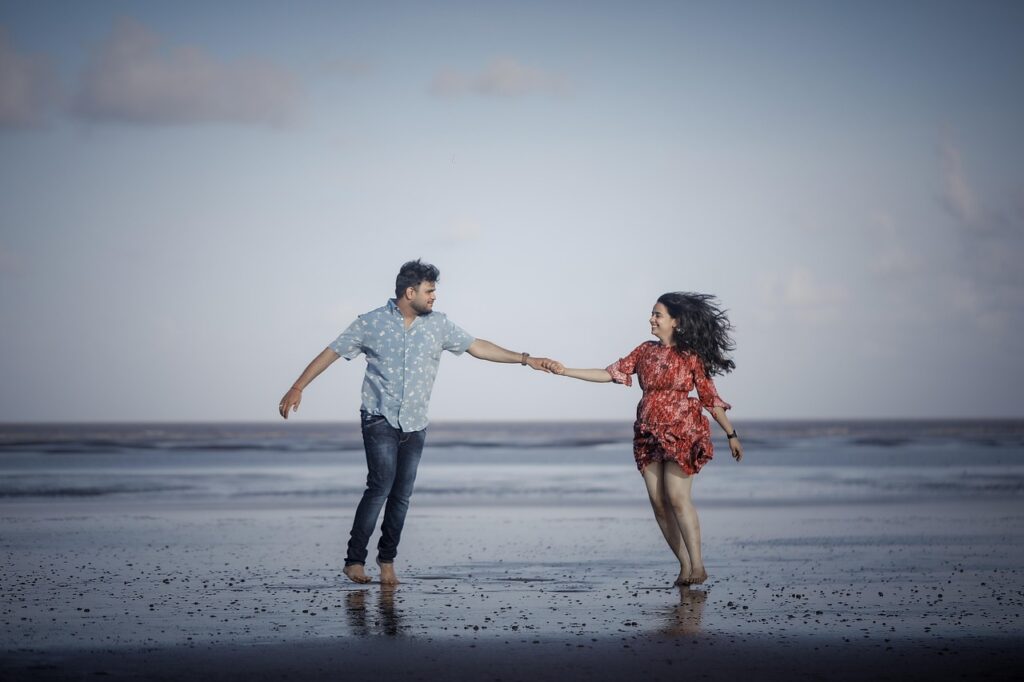
8. **A New Chapter: Marriages, Motherhood, and Life in Paris**After a string of tumultuous romances, Olivia de Havilland was finally ready for matrimony in 1946, choosing the cultured, literary ‘man-about-town’ Marcus Goodrich. This union, however, carried a notable footnote: while it marked de Havilland’s first marriage, Goodrich had been married four times previously, making her his fifth wife. Their family expanded in 1949 with the birth of their son, Benjamin, seemingly ushering in a period of domestic tranquility that was, tragically, short-lived.
Goodrich, true to a stereotypical ‘artist’s temperament,’ proved to be ‘unstable,’ prone to anger, and frequently directed his frustrations towards de Havilland. Their relationship quickly devolved into dysfunction, culminating in a separation less than five years after Benjamin’s birth. This personal setback offered another opportunity for her sister, Joan Fontaine, to cast a shadow on Olivia’s choices.
Joan, who evidently held little affection for Marcus Goodrich, seized upon the divorce as a moment to express her long-held disdain. Goodrich, author of the 1941 novel *Delilah*, had not published another work since, prompting Fontaine to ‘sneer,’ “It’s too bad that Olivia’s husband has had so many wives and only one book.” This public slight underscored the persistent, cutting nature of their sibling rivalry.
Despite the heartbreak of her first marriage, de Havilland found love once more in 1955 with Pierre Galante, the debonair editor of *Paris Match*. Their romance, an idyllic affair ‘worthy of a Cannes Film Festival movie,’ led de Havilland to relocate to Paris, where they settled and welcomed their daughter, Gisele. Such was the uniquely ‘French’ quality of their relationship that even after their eventual split, Galante simply ‘moved across the street,’ maintaining a close, unconventional bond that defined her Parisian life.

9. **The Actress Transformed: Dark Roles and Method Mastery**Olivia de Havilland’s commitment to her craft led her to embrace roles that were not merely challenging but profoundly dark, a journey culminating in her powerful performance in *The Snake Pit* (1948). To embody a woman unjustly confined to an asylum, de Havilland undertook an intense preparatory regimen, spending ‘hours upon hours visiting mental institutions’ to meticulously observe and understand the patients, immersing herself in the grim reality of the film’s setting.
Her dedication extended to extreme physical transformations. She ‘dieted intensely to make herself underweight,’ shirked hairdressers to achieve a dishevelled appearance, and refused to wear a bra for her asylum scenes, all to convey the raw vulnerability of a woman on the edge. Furthermore, the director demanded arduous ‘hydrotherapy’ scenes, involving freezing cold or piping hot baths, and simulated electric shock therapy, pushing the petite 5-foot-4 actress to her physical and emotional limits, yet de Havilland never wavered.
De Havilland’s intelligent approach to acting was evident from her earliest days in Hollywood; as a teenager on the set of *A Midsummer Night’s Dream*, she impressed the camera crew with her astute questions about lighting and focus, later employing this knowledge to ensure she was ‘always the best-lit actor.’ This meticulousness culminated in her Oscar-winning portrayal of a cosmetics tycoon in *To Each His Own*, where her method acting involved incrementally lowering her voice as her character aged and even wearing a different perfume for each distinct period of her character’s life.
Yet, this unwavering dedication came with significant personal costs. During her professional life, she grappled with insecurity and periods of intense depression. While filming *The Heiress*, she endured the condescension of co-star Montgomery Clift, who, despite being lauded for his acting prowess, ‘constantly degraded de Havilland on set about her own acting chops,’ pushing her to the brink. This professional turmoil often bled into her self-image, exacerbating her struggles.
By 1939, weary of studios failing to take her seriously, de Havilland began to exhibit signs of stress and unreliability. She confessed to being ‘in such a depressed state that I could hardly remember my lines’ during *Dodge City*. This unhappiness escalated dramatically during *Princess O’Rourke*, where she suffered from dizzy spells and anxiety, at times transforming into a ‘diva overnight’ by arriving late to set and storming off. These behaviors were less about entitlement and more a poignant manifestation of her deep dissatisfaction with the ‘flimsy parts Warner Bros. was throwing at her.’

10. **Behind the Camera: Challenging Directors and Unconventional Methods**Although Olivia de Havilland was often lauded as a ‘director’s actress’ due to her intelligent approach and commitment, her relationships with those behind the camera were not uniformly smooth. Her formidable will and clear vision for her performances occasionally led to clashes, most notably with the acclaimed director Sam Peckinpah during the filming of *Noon Wine*. Peckinpah, known for his intensity, was particularly dissatisfied with de Havilland’s acting in the film’s tense final sequence, prompting a contentious interaction.
Peckinpah’s dissatisfaction led to a ‘cruel trick’ that underscored the fraught nature of their collaboration. After making de Havilland perform the scene repeatedly, he finally declared a wrap, only to then confront her and ‘cruelly insulted her acting talents.’ Naturally, de Havilland’s fiery spirit ignited, leading her to launch into a ‘vitriolic rant’ in response. Unbeknownst to her, Peckinpah was secretly recording her emotional outburst the entire time, ultimately using the raw, unscripted footage in the finished project—a testament to her unyielding, genuine reactions.
De Havilland’s fierce desire for artistic integrity often put her at odds with directors and even her long-term co-stars, as she pushed boundaries to get the performance she desired or resist unwanted control. This extended beyond the studio system, influencing the very process of filmmaking and asserting her agency in an era where actresses had little. She was not merely a passive canvas for a director’s vision, but an active participant, demanding respect for her craft.
Her professional relationship with Errol Flynn, despite their past romantic entanglement and on-screen chemistry, also deteriorated due to artistic differences. De Havilland grew increasingly ‘dissatisfied with being cast as “that girl”’ in their collaborative ventures. She only reluctantly accepted a part in their eighth film together, *They Died With Their Boots On*, specifically because Flynn ‘demanded it.’ This reluctantly accepted role led to a ‘heartbreaking farewell’ scene between their characters, an ironic and poignant parallel to the actual end of their professional partnership, as Flynn reportedly knew ‘it would be the last time we worked together.’
11. **The Lifelong Echo: Escalation of the Fontaine Feud**The sibling rivalry between Olivia de Havilland and Joan Fontaine, seeded in childhood, blossomed into a full-blown public spectacle that cast a long shadow over their illustrious careers. The zenith of this early animosity arrived in 1942 when both sisters were nominated for Best Actress Academy Awards. When Joan emerged victorious, Olivia, though outwardly gracious, must have been ‘bitterly disappointed.’ Her attempts to offer congratulations were met with a stunning public rebuff from Joan, leaving de Havilland feeling ‘stung and bitter,’ igniting a new, more intense phase of their feud.
Four years later, Joan further exacerbated the rift by making ‘several disparaging comments about her sister’ in a magazine interview, ensuring their personal conflict became fodder for public consumption. Olivia, hoping for a rapprochement, assumed Joan would ‘come to her senses and send her an apology.’ However, ‘that apology never came,’ solidifying Olivia’s bitterness and deepening the chasm between them.
The feud reached an unforgivable climax around the death of their mother, Lilian, in 1975. The sisters had already disagreed on Lilian’s cancer treatment, but Joan later claimed that Olivia ‘didn’t even bother informing her’ of their mother’s passing. She asserted that a telegram was sent but ‘took two weeks to arrive,’ rendering it useless, and that she was ‘didn’t even invite her to the funeral.’ Olivia, however, presented a ‘twisted’ counter-narrative, asserting she had invited Fontaine, who simply ‘brushed her off,’ leaving the truth shrouded in competing accusations.
Their animosity continued to manifest in stark public displays. At a 1979 Academy Awards celebration for previous Oscar winners, both ‘doyennes acted like little school girls,’ insisting on sitting ‘as far apart from each other as possible’ for a ‘class photo’ and refusing to speak. A decade later, their feud had grown ‘bitter beyond imagination’ when they were unwittingly assigned adjacent hotel rooms for another Oscars ceremony. Joan defiantly ‘changed her room and swore she would never go to another ceremony again,’ a vow she upheld.
Perhaps the most chilling glimpse into the depth of their lifelong enmity came from a ‘disturbing “gift”’ Olivia supposedly left Joan in a childhood ‘will.’ Penned at the tender age of nine, it read, “I bequeath all my beauty to my younger sister Joan, since she has none.” This cruel, formative jab underscored a rivalry that was not merely professional but deeply personal, shaping both their lives and reputations well into their old age.
12. **A Century of Stardom: Defiance, Humor, and Enduring Legacy**Despite the decades of professional battles, intensely personal heartbreaks, and the agonizingly public sibling rivalry, Olivia de Havilland maintained a remarkable spirit, a sharp wit, and an unwavering defiance well into her old age. It is perhaps a testament to the complex, love-hate bond with her sister that Joan Fontaine herself bestowed upon Olivia the ‘sweet nickname’ ‘Livvie,’ a moniker that endured throughout her extraordinary life, hinting at a profound connection beneath the layers of animosity.
Her characteristic humor remained undimmed by time. In a candid 2006 interview, the centenarian actress famously quipped about the changing landscape of Hollywood, observing, “I suppose you’d like to know how actresses of my day differ from actresses of today,” before drawling with a perfectly raised eyebrow, “the actresses of today are richer.” This witty self-awareness underscored her enduring charm and her incisive perspective on an industry she helped define.
Indeed, de Havilland never truly ceased ‘causing trouble’ in the most delightfully defiant ways. Even past her 100th birthday, she proved she still had fight left, famously suing the network behind Ryan Murphy’s *Feud* in 2017 for its portrayal of her. At 101 years old, she demonstrated a tenacious determination to protect her likeness and narrative, proving that her ‘defiant spirit’ was not merely a youthful rebellion but an intrinsic, lifelong aspect of her formidable character.
Her peaceful passing in her beloved Paris, France, on July 26, 2020, at the astonishing age of 104, marked not just the end of an incredible life but, for many, ‘the end of an era.’ She was hailed as ‘the last true Old Hollywood star from the studio system,’ embodying the glamour, resilience, and sheer force of will that defined that golden age. Her final ‘claim to fame’ was her status as the ‘last surviving member of Gone With the Wind,’ a poignant irony given her character Melanie is one of the few main characters in the film to perish.
Read more about: A Deep Dive into Jenna Ortega’s Phenomenal Journey and What Her Major Career News Means for Fans Everywhere
Reflecting on this longevity, de Havilland herself mused in 1999, “It’s ironic, isn’t it? Melanie dies . . . and I didn’t die. I haven’t, and I don’t intend to.” And indeed, she very nearly achieved that ambition, living to a remarkable 104 years. Olivia de Havilland’s life was a masterclass in resilience, a dramatic tapestry woven with triumphs and heartaches, fiercely independent decisions, and an enduring legacy that proved her indomitable spirit shone brighter, and often darker, than any silver screen could fully capture. She was, in every sense, an icon who defied expectations and forged her own, unforgettable path.


